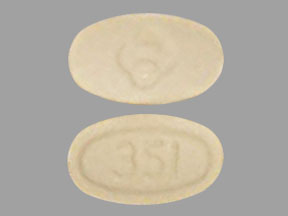Vorapaxar Disease Interactions
There are 3 disease interactions with vorapaxar.
Vorapaxar (applies to vorapaxar) bleeding
Major Potential Hazard, High plausibility. Applicable conditions: Peptic Ulcer, Intracranial Hemorrhage, Bleeding Associated with Coagulation Defect
Vorapaxar increases the risk of bleeding and it is contraindicated in patients with active pathological bleeding such as intracranial hemorrhage or peptic ulcer. In other patients, consider the underlying risk of bleeding before initiating therapy. General risk factors include older age, low body weight, reduced renal or hepatic function, history of bleeding disorders, and use of certain concomitant medications. The use of warfarin and other anticoagulants should be avoided. Bleeding should be suspected in any patient who is hypotensive and has recently undergone coronary angiography, percutaneous coronary intervention (PCI), coronary artery bypass graft surgery (CABG), or any other surgical procedure.
References (1)
- (2014) "Product Information. Zontivity (vorapaxar)." Merck & Co., Inc
Vorapaxar (applies to vorapaxar) history of stroke
Major Potential Hazard, Moderate plausibility. Applicable conditions: History - Cerebrovascular Disease, Intracranial Hemorrhage, Cerebral Thrombosis/Embolism
Vorapaxar is contraindicated in patients with a history of stroke, transient ischemic attack (TIA), or intracranial bleeding. The risk of intracranial bleeding is higher in these patients.
References (1)
- (2014) "Product Information. Zontivity (vorapaxar)." Merck & Co., Inc
Vorapaxar (applies to vorapaxar) liver disease
Major Potential Hazard, Moderate plausibility.
No dose adjustment is required in patients with renal dysfunction or mild to moderate hepatic impairment. Vorapaxar is not recommended in patients with severe hepatic impairment due to bleeding risk.
References (1)
- (2014) "Product Information. Zontivity (vorapaxar)." Merck & Co., Inc
Switch to consumer interaction data
Vorapaxar drug interactions
There are 220 drug interactions with vorapaxar.
More about vorapaxar
- vorapaxar consumer information
- Check interactions
- Compare alternatives
- Side effects
- Dosage information
- During pregnancy
- Drug class: protease-activated receptor-1 antagonists
- En español
Related treatment guides
Drug Interaction Classification
| Highly clinically significant. Avoid combinations; the risk of the interaction outweighs the benefit. | |
| Moderately clinically significant. Usually avoid combinations; use it only under special circumstances. | |
| Minimally clinically significant. Minimize risk; assess risk and consider an alternative drug, take steps to circumvent the interaction risk and/or institute a monitoring plan. | |
| No interaction information available. |
See also:
Further information
Always consult your healthcare provider to ensure the information displayed on this page applies to your personal circumstances.


